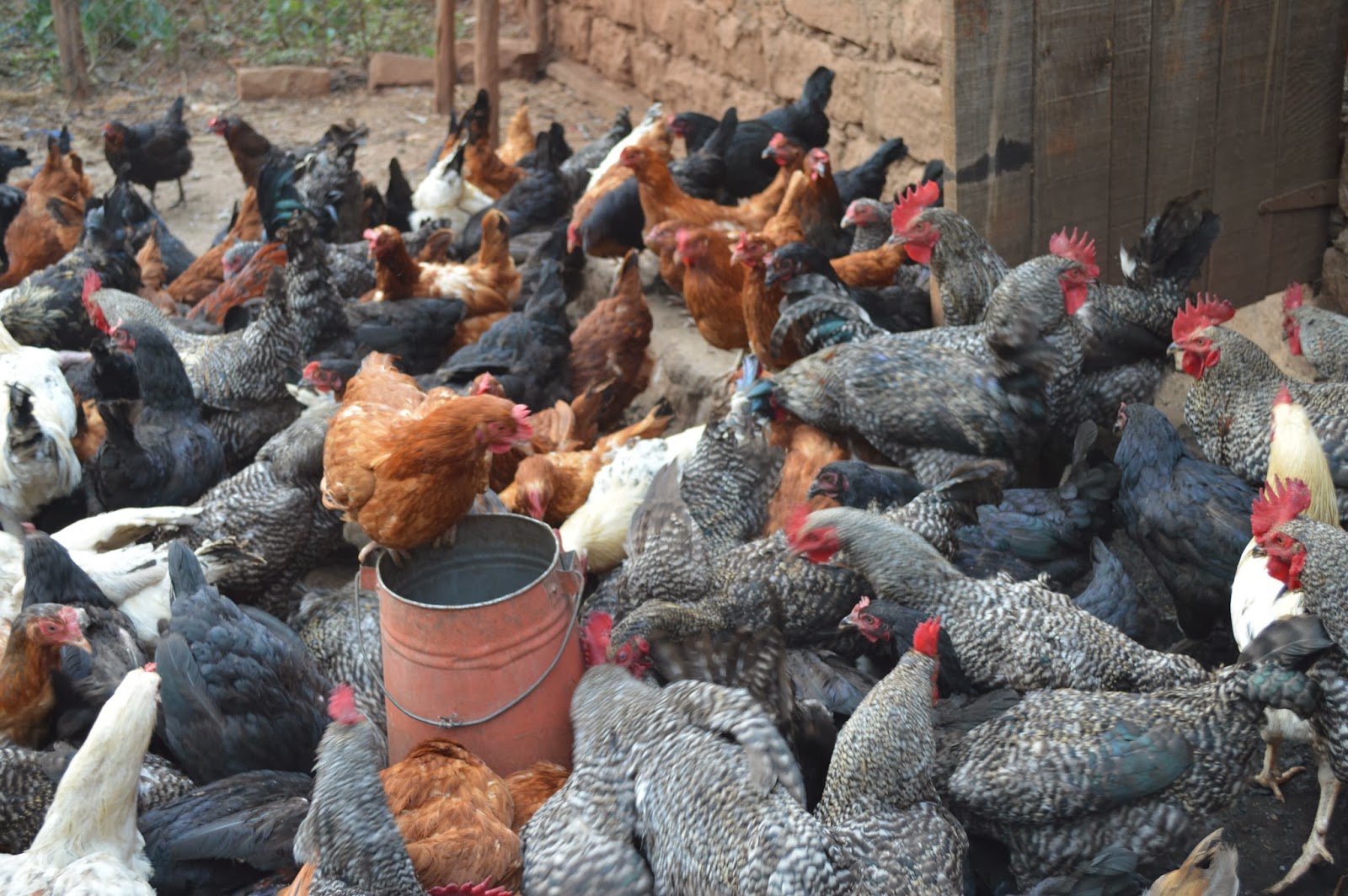Avoid inbreeding by introducing one cock for every 10 hens every 2 years.
Selection of eggs for setting
Improved nutrition can raise the average number of eggs laid per clutch by 100%. Fertilised eggs are live and successful hatching depends on how they are taken care
of from laying till setting. The broad end of an egg has an air sac through which the egg breathes. Eggs should be stored with the broad end facing upwards. The egg shell is porous (has little holes which if blocked may suffocate the embryo [baby chick]). To prevent rotting, eggs must be stored in a clean and dry place. Since fertile eggs grow slowly, eggs that are more than 14 days old should not be used for hatching.
Hens lay eggs earlier, doubling the number of clutches per hen per year while the improved management increases survival rates from 2-6.
Serial hatching
Hens or ducks can be used to sit on eggs continuously for 2 or more times by removing chicks every time they hatch and replacing them with new eggs. If this is coupled with synchronisation, then a farmer could hatch more chicks without using an incubator. Ducks can sit on 30-35 eggs and can be used for up to 6 consecutive times.
Synchronised hatching
When hens that started laying within the same week reach broodiness, the 1st hen to reach this stage can be delayed by being given one egg to sit on. This can be repeated for the 2nd and 3rd hens so that finally all the hens are set on one day . On the day of setting, all the dummy eggs should be destroyed. Chicks that hatch on the same day fit in well with feeding and vaccination programmes. The time between the 1st hen and the last should not be more than one week.
Management of chicks
To prevent high mortality, chicks must be kept in a safe, warm and clean environment and must have easy-to-digest feed at all times. Chicks may be removed from the hatching hen or duck and kept separate using the following brooding methods:
- In a carton box with ventilation holes drilled around the upper side with wood shavings as bedding and warmed by either a lantern or by covering the top with a blanket or a clean sisal sack at night.
- In ‘Liuli’ on a sisal sack or wood shavings and warmed as above. Do not use a lantern under the basket. The basket or Liuli can be taken out when the sun shines. However, the birds should be protected from very hot sun and rain
Hens that do not discriminate chicks can be trained as foster hens. Up to 65 chicks of different ages can be brooded by such a hen (Fig. 5). When it gets cold, the youngest chicks are the 1st to go under the hen and the oldest will come later around the hen.

